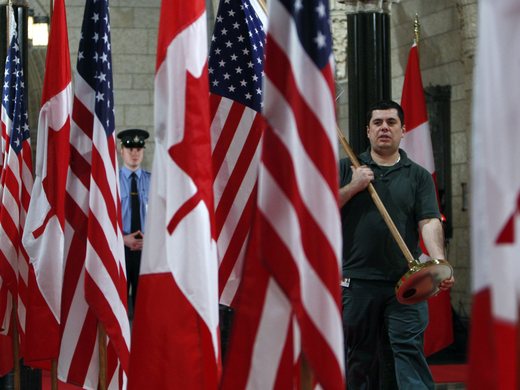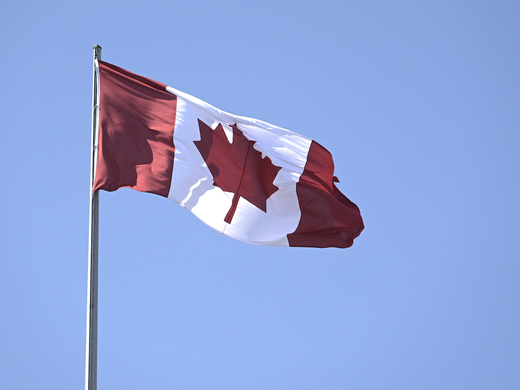In the face of the US tariff threat, Canadian politicians are now united in calling for a more independent national economy — one that is less vulnerable to external threats. To which economist can they turn for intellectual inspiration?
It turns out that the most prestigious award in Canadian economics, the John Rae Prize, is named after just such a thinker. Rae’s thought even helped to inform the first serious effort to build up an independent Canadian economy: the country’s 1879 National Policy. Yet most Canadians — including many of the country’s economists — know little of the man, his ideas or the potential relevance of these ideas to the current moment.
Born in Scotland in 1796, John Rae was raised not far from the hometown of another, much more famous economist, Adam Smith. At age 26, he emigrated to and worked as a schoolteacher in Upper Canada, first in Williamstown, then in Hamilton. In 1834, he published a book that led one historian to describe him as “possibly as brilliant an economist as nineteenth century North America was to produce.”
Writing from what he called the “Canadian backwoods,” Rae produced a book outlining his theories. He began the 1834 book, titled Statement of Some New Principles on the Subject of Political Economy, with a sentence that should resonate with all Canadian politicians today: “To promote prosperity within, to guard against danger from without, have ever been esteemed the two great branches of the duty of the Statesman.”
Like many current Canadian policy makers, Rae was centrally concerned with improving productivity to engender national prosperity. Much more so than Smith, he placed enormous emphasis on “the power of invention” and technological change as ways to boost what he called the “productive powers of the community.”
Contemporary policy makers should pay heed to Rae’s warnings about the risks of excessive economic dependence on another country. Guarding against “danger from without” included recognizing that foreign trade was “liable to be interrupted by war or by legislative enactments.” Such interruptions, Rae argued, generated a “great waste of the resources of the community,” often leaving its whole economy “disjointed.” In many cases, he noted that “it is long before the society recovers from the shock.” To boost prosperity and minimize external danger, Rae urged policy makers to embrace a goal with much relevance to the current moment: strengthening a diverse national industrial sector.
Vibrant local industry would boost productivity, including by creating wider employment opportunities and giving “a powerful stimulus to the ingenuity of its members,” Rae held. It would also serve the key goal of boosting national economic independence by reducing reliance on imports and creating more stable domestic markets for farmers.
What Role for Government?
Rae argued that one tool for realizing these goals was trade policy. Challenging Smith’s free trade advice, Rae suggested that temporary tariffs — if applied “cautiously” — could foster the growth of national manufacturing and encourage foreign investment that “transferred” industry from abroad. Although protectionism might generate some short-term costs, Rae argued, countries needed to be willing to accept “the sacrifice of some smaller present good, for the production of some greater future good.”
In other published work, Rae highlighted the importance of cultivating new export markets for local industry, as well as public procurement policies, improved education, and ensuring firms’ access to capital, energy and transport facilities.
Rae even anticipated the current interest in boycotting US products, recommending that “the Court and the people of fashion give a preference to home manufactures” in order that “public opinion” be “strengthened in their favour.” All of these approaches are being considered once again by Canadian policy makers in response to the tariff threat.
Another recommendation with contemporary relevance was Rae’s emphasis on encouraging diverse migration. In his 1834 book, Rae argued that migrants brought not just useful skills and knowledge but also a diversity of experience that fostered innovation. Praising “countries where various different races, or nations, have mingled together,” he argued that “when individuals meet from different countries, they reciprocally communicate and receive the arts of each, adopt such as are suited to their new circumstances, and probably improve several.”
In these various ways, Rae argued that countries could cultivate growth in sectors beyond those in which they might have a “natural” advantage. He also insisted that governments be ambitious in their goals of fostering new competitive sectors: “because one country alone now produces particular commodities, we are by no means warranted to conclude that nature intended they should be produced only there….Who can positively say what fifty years hence will be the productions of any country?”
Rae’s ideas were highly innovative for his time, but with typical Canadian modesty, he did little to promote them after the publication of his book. Indeed, in his later years, he did not even own a copy of the volume. But his insights were soon recognized by the famous English political economist John Stuart Mill.
Through that channel, Rae became Canada’s first internationally famous economist. When Sir John A. Macdonald first outlined his case for what would become the National Policy of 1879, he cited at length one of Mill’s passages that discussed Rae’s ideas.
Analysts today have begun drawing parallels between the current moment and the circumstances that created Canada’s National Policy in 1879. It is time to dust off old copies of Rae’s 1834 book that helped to inform that policy. A future John Rae Prize awaits the Canadian economist who rises to the challenge of updating Rae’s analysis to serve the country’s contemporary predicament, and an even larger prize to the policy makers who can successfully put this theory into practice.



